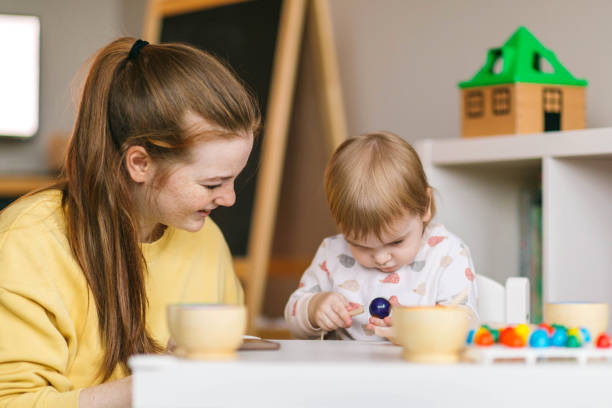The purpose of sensory materials is to exercise the child’s senses by influencing them and to strengthen and refine the detail scale of sensory perception. Our five sense organs are our windows to the world. The more textures, images, tastes, sounds and smells the human brain is exposed to in the first years of its life, the more developed it will be. If a child’s environment is devoid of stimuli or if he uses these five senses as much as he is exposed to by chance, he will have a mindset that is unaware of many senses that he cannot discover. Thus, mental basic functions become sterile. Matching, grouping, recognizing and distinguishing differences, integrating and abstracting, classifying, making series with the same properties are exercises for the sense organs.
The child organizes the stimuli he has received until that day with sensory materials. But these stimuli must be rich, regular and systematic. One of the main pedagogical purposes is to ensure that the child focuses on one point in the use of sensory materials. Concentration is very important in Montessori education. Because learning can only happen as a result of concentration. The child needs intense sensory stimulation. Maria Montessori developed material for the five senses. The materials are designed in a certain order and in a way that attracts the attention of the child. Each material is directed to only one sense and teaches a single concept, according to the principle of isolation of difficulty. In this way, we do not confuse the child while sensitizing his senses.
E.g; All of the color tablets we use to teach colors were prepared from the same material, in the same size and form. Only the colors are different. Touch tablets, weight tablets, heat tablets, sound tubes, scent tubes, heat tubes also differ only in the point to be sensitized, all other features are the same. He learns the existence of different dimensions with the handle cylinder blocks, the connection between weight and size with the brown ladder, the differences between the geometric drawer and the surfaces, the pink tower to perceive three different dimensions visually, the concept of length with the red sticks, in a concrete and isolated way. As a result, we regularly record these stimuli in our brains.
“You can’t put in your mind what you can’t put in the child’s hand.”
Maria Montessori
As a result of studies with sensory materials, the child;
-To support the development of hand-eye coordination,
-Enabling him to concentrate on his work,
-To support the habit of careful and planned work,
-To support making 10 series in mathematics,
-To support writing skills,
-To refine your senses,
-To support memory and visual perception,
-To ensure the development of sensitivity towards art and aesthetics,
-To support fine and gross motor development,
-To understand the dimensions,
-To increase the sensitivity and adaptation to the environment they live in,
-Many goals are achieved, such as supporting the development of productivity.
As a result of sensitizing the senses and providing focus, attention deficit or hyperactivity disorder is minimized or prevented.
